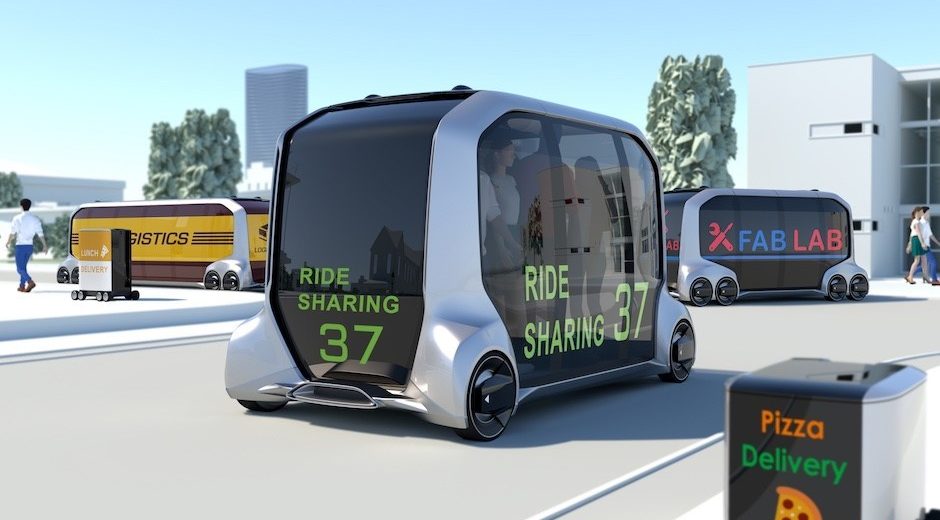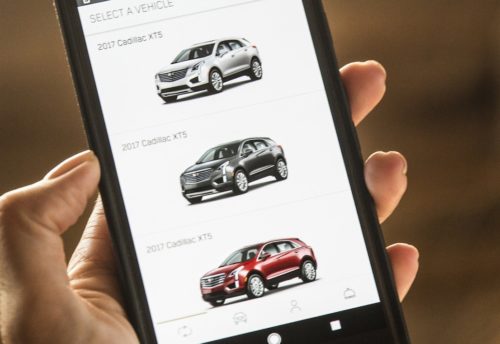
The Primordial Soup of On-Demand Mobility
Stephen Zoepf and I continued our collaboration on analyzing key components of next-generation mobility. In this second article we focus on on-demand mobility services, they issues they face, and the opportunities they have. The piece is pertinent to the conversation about California’s AB5 and the conversation it is raising. It also provides a good preview of topics I am discussing in my upcoming book.
When taxis began to appear on New York streets in 1897, car ownership was rare. A century later, a resurgence of technology-enabled ride-hailing, ridesharing, micromobility and carsharing businesses are disrupting more traditional transportation. The popularity of on-demand mobility suggests a bright future for the industry, but few of these businesses are reliably profitable today.
Working feverishly in search of profit and customer retention, and fighting against evolving competitors and regulations, these companies are quickly iterating their business models. Long-term success is far from guaranteed, but many of the ingredients (phone-hailing, cashless transactions, mapping, vehicle tracking, time/cost prediction) are identifiable as necessary components in today’s primordial soup of on-demand mobility.
Even as these underlying technologies remain the same, we expect business models to continue evolving, and the companies leading today may not be the ones that endure. Part of this uncertainty arises because today’s on-demand mobility businesses have flourished under favorable market conditions that may not last:
- Booming economies: Low unemployment around the world has increased consumer willingness to pay for faster, more convenient transportation. Most new mobility businesses have not been tested by a major recession: Uber’s 2010 U.S. launch trailed the Great Recession by a year.
- Lax regulatory environments: Aggressive market entry and lobbying have enabled companies to operate without compliance with costly regulations (e.g. taxi medallions and minimum wage) particularly in the U.S. and China.
- Deferred Maintenance: Traditional public transit in U.S. cities has been pummeled by a series of confidence-weakening service interruptions: breakdowns in NYC, flooding in DC, and two derailments in one week in Boston.
- Induced demand: Abundant private, corporate, and sovereign capital has enabled new mobility companies to aggressively recruit contractors by subsidizing payments and lure customers by subsidizing fares, effectively selling services below cost for years.
This environment has allowed rapid market entry by numerous mobility innovators and followers. However, as on-demand mobility matures, investors will focus more on the financial performance of these companies. Measurable performance indicators such as cost per ride, customer lifetime value, customer acquisition and retention, driver acquisition and retention, and active user growth are now scrutinized more than ever before. On-demand mobility services companies are quickly realizing that they will need to reduce the cost per ride and increase the revenue per ride and each customer’s lifetime value. These companies are already taking steps to curtail their marketing costs and attempt to improve profitability by increasing fares, and decreasing driver payments.
Adjusting customer fares and driver payments is a delicate balancing act. First of all, willingness to pay for a ride and willingness to work may be negatively correlated (how much would you pay for someone to drive you on New Year’s Eve? Or how much would someone have to pay you to drive them?) While increasing the effective “commission” rate leads to better profitability, lower payments to drivers lead to dissatisfaction and attrition. Driver attrition leads to service quality deterioration, which leads to customer attrition. Customer attrition leads to lower effective driver income, leading to driver attrition. These mutually reinforcing effects mean that any market instability, left unchecked, could lead to a rapid downward spiral in use of the service.
In order to create on-demand mobility services businesses with long-term profitability, companies must increase what customers are willing to pay for each service and each customer’s “share of wallet,” and/or reduce the cost of providing each service. There are at least two ways to increase revenue and four ways to reduce costs. In particular, revenues can be increased by providing:
- Additional Services: Mobility companies have been augmenting their transaction-based business model with additional models, primarily based on advertising, loyalty, 3rd party data gathering, and in-cabin passenger commerce. It is not yet clear whether the benefits of these models go-to driver or the mobility service provider. It is also not clear how sustainable these models will be in the long term and how consumers will react to them.
- Additional Modalities: Ride-hailing companies have been adding modalities, e.g., micromobility. This enables a customer to use different modalities for different trip types and even combine services in order to optimize certain objectives such as achieving a lower trip price or expediting the arrival to a specific destination based on traffic conditions. Mobility services companies have also been expanding their partnerships with other transportation providers, e.g., public transportation agencies, in an effort to provide Mobility as a Service. We can foresee a fierce competition between cities and on-demand mobility companies regarding which side will dominate and emerge as the Mobility as a Service provider of choice.
Costs can be reduced by:
- Pooling: With sufficient density of demand, ride-hailing services are able to merge independent passenger trips without much increase in travel distance and travel time. If the detour is small and doesn’t affect rider willingness to pay by much, then ride-hailing providers are able to collect a larger fraction of the total trip revenue.
- Automation: While today’s automated vehicles are expensive prototypes, there is hope that future automated vehicles would be reliable enough to deliver large-scale commercial ride-hailing services without the cost of a driver.
- Vehicle fleets: Build the service around fleets consisting of a small set of vehicle types with low operating and maintenance costs. However, there is an inherent tension between fleet cost reduction and gig drivers. The current gig-based model popular in the U.S. encourages drivers to use their own cars. This may be more appealing to gig drivers who want personal transportation and don’t want to visit a fleet rental center to collect their car. However, these vehicles are designed for personal transportation, not fleet duty, and carry higher operational costs than a purpose-designed vehicle would.
- Full-time employee drivers: Today’s ride-hailing companies don’t know in advance when each driver will work, how long they will stay online, or which rides they will accept. In the presence of this uncertainty, they must recruit enough drivers to bring expected arrival times to acceptable levels. To manage this uncertainty, ride-hailing companies use “gamification” to compel drivers to work during specific times, reduce driver acquisition costs, and offer a more uniform passenger experience. Effective gamification requires investment in experimentation without guaranteed results. If on-demand mobility companies begin to treat drivers as employees, some of these uncertainties begin to disappear. Instead of investing in gamification, the mobility services companies would need to figure out what to pay employees, for which hours, and how to set shifts in a way that would cover demand. A model based on employee drivers might limit some of the supply-side flexibility ride-hailing companies enjoy today, but would offer greater control over productivity and customer experience.
In California, Assembly Bill 5 (and here) has redefined employees in a way that may force ride-hailing and goods delivery companies to reclassify workers as employees. Uber and Lyft have already indicated their intention to challenge such reclassification, representative groups of workers have brought at least one lawsuit, and California Governor Gavin Newsom indicated his inclination to negotiate. It may take years before the nature of this type of work is fully defined.
Reclassification of drivers will certainly change the relationship between ride-hailing/ridesharing companies and the people providing their service, but it’s not a death knell. A ride-hailing model based on purpose-built, efficient, cheap-to-operate vehicles operating at a scale large enough to pool large numbers of passengers could allow driver pay to increase while vehicle operational costs decrease, and revenue from denser passenger demand increases revenue.
Mobility services companies are not facing the same dilemmas as automakers, but in some ways, the experimentation in on-demand mobility presents some of the same risks as those facing automakers we described in “The Automotive Industry at a Crossroads.” The ingredients for multimodal on-demand mobility services including technology and business models are all there.
The challenge these companies will need to address revolves around using these ingredients to develop scalable and enduring businesses in order to provide the services their customers demand and the financial returns their investors expect. Changing the cost and revenue structure may require vast investment in the short run, but might actually result in a more optimal long-term mobility ecosystem, allowing the industry to fully emerge from the primordial soup.




Leave a Reply